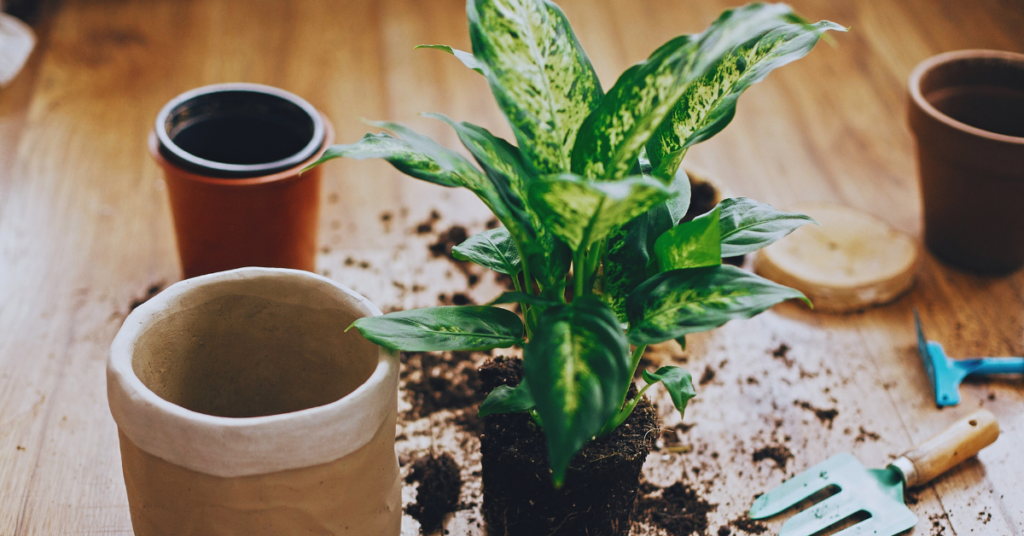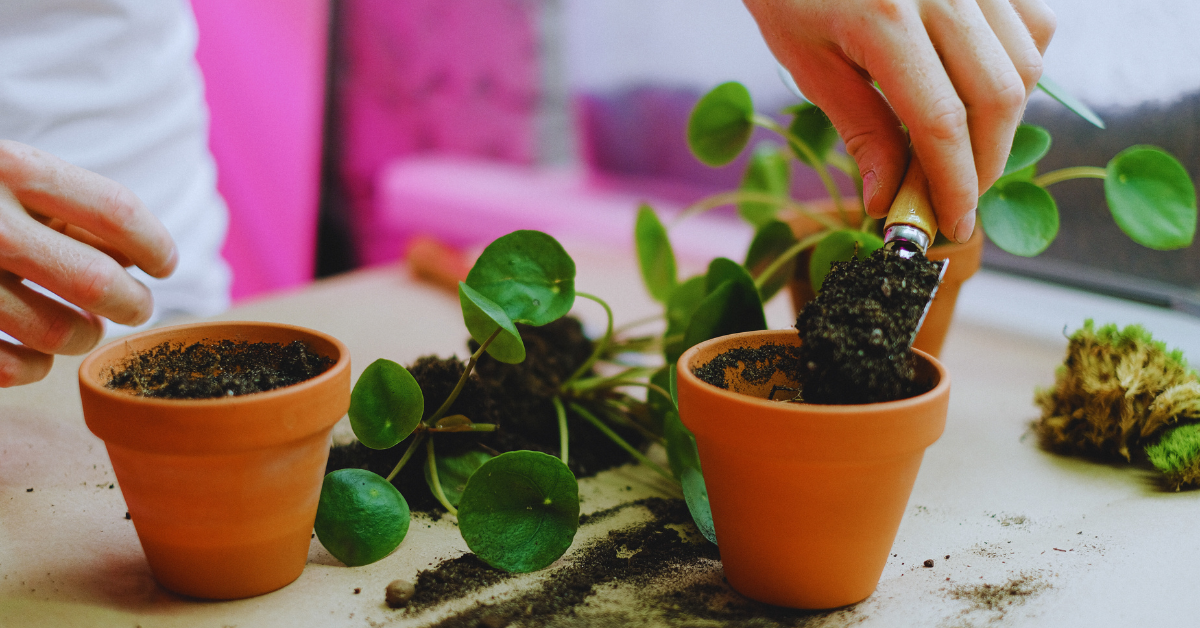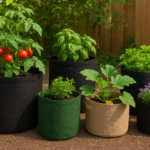Repotting a money plant, Pothos, or Devil’s Ivy is crucial for any plant enthusiast. These popular houseplants are cherished for their lush, vibrant foliage and easy care. However, over time, they can outgrow their pots or exhaust the nutrients in their soil, leading to stunted growth or yellowing leaves. Repotting provides the plant with fresh soil rich in nutrients and gives the roots more room to expand, promoting healthier growth. Ideally, this task should be done every 1-2 years or whenever you notice signs such as roots growing out of the drainage holes. You can ensure your money plant remains healthy, vibrant, and thriving by following a few simple steps.
This guide will walk you through the entire process, from choosing the right pot and soil to repotting and post-repotting care, ensuring your money plant gets the best possible start in its new home.
Overview of Money Plants

Money plants, scientifically known as Epipremnum aureum and commonly called Pothos or Devil’s Ivy, are beloved houseplants cherished for their resilience and attractive appearance. These tropical plants are characterized by their heart-shaped, glossy leaves, which range in colour from vibrant green to variegated patterns of white, yellow, or light green.
Native to the Solomon Islands, money plants are incredibly versatile and can thrive in various indoor environments. They are trendy due to their low maintenance needs and ability to adapt to different light conditions, although they prefer bright, indirect light. Their trailing vines make them ideal for hanging baskets or climbing trellises, adding greenery to any space.
To know more About Money plant read:Can Money Plant Grow in Aquarium? With tips
Why is Repotting Necessary?
Repotting your money plant is essential to its care routine, ensuring the plant remains healthy and vibrant. Here’s why repotting is necessary:
- Promotes Growth: Over time, the roots of a money plant can outgrow their current pot, becoming root-bound. This means the roots have filled the pot and have no more room to expand, which can stunt the plant’s growth. Repotting provides additional space for the roots to grow, promoting plant growth.
- Refreshes Soil: Over time, the soil in a pot can become compacted and depleted of nutrients. Fresh soil provides the nutrients that the plant needs to thrive. It also improves soil aeration and drainage, preventing issues like root rot.
- Prevents Diseases and Pests: Old soil can harbour pests and diseases that can harm your plant. Repotting helps eliminate these potential threats by introducing fresh, clean soil.
- Improves Aesthetic and Stability: As money plants grow, they can become top-heavy and unbalanced in their current pot. A larger, more stable pot can provide better support and improve the overall appearance of your plant.
Benefits of Repotting Your Money Plant

Repotting your money plant offers numerous advantages to its overall health and growth. Here are the key benefits:
- Promotes Healthy Growth
Repotting gives your money plant more space for its roots to grow and expand. This encourages vigorous growth and allows the plant to develop a more robust root system.
- Refreshes Nutrient Supply
Over time, the soil in your plant’s pot can deplete essential nutrients. Repotting replenishes the soil with a fresh, nutrient-rich potting mix, ensuring your plant has the nutrients it needs to thrive.
- Improves Soil Aeration and Drainage
Fresh potting soil is less compacted and has better aeration, which allows the roots to breathe more easily. It also improves drainage, preventing waterlogging and reducing the risk of root rot.
- Enhances Root Health
Repotting allows you to inspect the roots and trim any damaged or diseased ones. This promotes healthier root growth and prevents problems affecting the entire plant.
- Prevents Root-Bound Conditions
When a plant becomes root-bound, its roots circle the pot, limiting its growth and nutrient absorption. Repotting into a larger pot prevents this, allowing the roots to spread out and absorb nutrients more effectively.
- Increases Stability
A larger pot provides better support and stability for your money plant, significantly if it has grown tall and top-heavy. This helps prevent the plant from tipping over and ensures it remains upright.
- Reduces Pests and Diseases
Old soil can harbour pests and diseases that can harm your plant. Repotting with fresh soil helps eliminate these potential threats, providing a healthier environment for your money plant.
- Encourages New Growth
Repotting can stimulate new growth. The plant may respond to the new space and fresh soil by producing new leaves and stems, leading to a more vibrant appearance.
- Enhances Aesthetic Appeal
A well-maintained, freshly repotted plant looks more attractive. Choosing a new pot that complements your home decor can also enhance the aesthetic appeal of your indoor space.
- Boosts Overall Plant Health
Repotting significantly boosts the overall health and vitality of your money plant by addressing multiple factors such as soil quality, root health, and stability. A healthy plant is more resilient to stress and environmental changes.
When to Repot a Money Tree Plant?

Repotting a money tree plant, also known as Pachira aquatica, is a crucial part of its care routine to ensure it remains healthy and continues to thrive. Here’s how to determine the best time for repotting your money tree plant:
Signs That It’s Time to Repot
- Roots Growing Out of Drainage Holes: When you see roots emerging from the bottom of the pot, it’s a clear sign that your money tree needs more space.
- Soil Dries Out Quickly: If the soil dries out faster than usual after watering, the plant’s roots have occupied most of the pot space.
- Stunted Growth: If your money tree’s growth has slowed or looks less vibrant, it may be due to restricted root space or depleted soil nutrients.
- Top-Heavy Plant: If your money tree becomes top-heavy and prone to tipping over, it might need a larger pot for better stability.
Ideal Seasons for Repotting
The best time to repot your money tree plant is during its active growing season, typically in the spring or early summer. During this period, the plant is more resilient and can recover quickly from the stress of repotting. Avoid repotting in the winter when the plant’s growth slows down and enters a more dormant phase.
Recognizing the Plant’s Growth Cycle
- Active Growth Phase: The money tree plant experiences robust growth in spring and early summer. You’ll notice new leaves and increased height, indicating it’s a good time for repotting.
- Dormant Phase: During the fall and winter, growth slows down as the plant conserves energy. Repotting during this period can shock the plant and impede its recovery, so it’s best to avoid repotting now.
General Repotting Schedule
Generally, report your money tree plant every 2-3 years or when you observe the above signs. Regular repotting ensures the plant has fresh soil, adequate nutrients, and enough space for root growth, promoting a healthy and vibrant money tree.
By repotting your money tree at the right time and during the appropriate season, you can help it maintain its health and beauty, ensuring it continues to be a stunning and thriving addition to your home.
How do you report a money plant?
Repotting a money plant, also known as Pothos or Devil’s Ivy, is essential to ensure it remains healthy and vibrant. Here’s a step-by-step guide on how to successfully repot your money plant.
Materials Needed for Repotting
Before you start, gather all the necessary materials to ensure a smooth repotting process:
- A new pot (2-4 inches larger in diameter than the current pot)
- Fresh potting soil
- Gardening gloves
- A trowel or small shovel
- Pruning shears
- Watering can
Step-by-Step Guide

Choose the Right Pot
Select a pot slightly larger than the current one, with suitable drainage holes. Terra cotta pots are ideal as they allow the soil to dry out more quickly, preventing root rot.
Prepare the New Pot
Clean the new pot to remove dust or debris. To improve drainage, place a layer of small stones or gravel at the bottom.
Prepare the Potting Soil
Use a well-draining potting mix. Peat, pine bark, and perlite or vermiculite blend works well for money plants.
Water the Plant
Water your money plant a day before repotting. This makes removing from the old pot easier and minimizes stress on the plant.
Remove the Plant from Its Current Pot
Carefully remove the money plant from its current pot. Gently tap the sides of the pot to loosen the soil. If the plant is stubborn, use a trowel to help relieve the edges. Once free, hold the plant by the base and gently lift it out.
Inspect and Prune the Roots
Examine the roots for any signs of damage or disease. Healthy roots are white and firm, while unhealthy roots may appear brown, mushy, or black. Trim any damaged or overgrown roots with clean pruning shears to stimulate new root growth and maintain plant health.
Position the Plant in the New Pot
Place the plant in the centre of the new pot. Hold it upright and start filling in with fresh potting soil around the roots. Press the soil down to eliminate air pockets, but avoid packing it too tightly. Ensure the plant is at the same soil level as in the old pot.
Water Thoroughly
Water the plant thoroughly after repotting to help settle the soil. Ensure that excess water drains out to prevent waterlogging. Keep an eye on the plant for the next few weeks, as repotting can be stressful.
Post-Repotting Care
Place the money plant in a location with bright, indirect light. Avoid direct sunlight, which can scorch the leaves. Maintain a consistent watering schedule, allowing the top inch of soil to dry out between waterings. Monitor the plant closely for signs of stress, such as wilting or yellowing leaves, and adjust care as needed.
What Happens If You Report a Money Tree Too Soon?
Repotting a money tree (Pachira aquatica) too soon can lead to several issues that can stress the plant and hinder its growth. Here’s what can happen if you report your money tree prematurely:
Root Shock
When a money tree is repotted before necessary, the roots can experience shock. This stress can disrupt the plant’s ability to absorb water and nutrients effectively, leading to wilting or yellowing leaves. The plant may also stop growing temporarily as it tries to recover from the shock.
Overwatering Risk
New, larger pots hold more soil, retaining more water. If the root system needs to be developed enough to handle the increased soil volume, it can lead to overwatering. Excess moisture in the soil can cause root rot, a severe condition that can damage or even kill the plant.
Nutrient Imbalance
Repotting too soon can result in a nutrient imbalance. Fresh soil is rich in nutrients, which is beneficial, but if the plant isn’t ready for an influx of nutrients, it can lead to nutrient burn or toxicity. This can manifest as browning or yellowing of the leaves.
Unnecessary Stress
Plants, like all living things, have cycles and rhythms. Disrupting these cycles by repotting too soon can cause unnecessary stress. Money trees are resilient, but constant stress from unnecessary repotting can weaken their health, making them more susceptible to diseases and pests.
Wasted Effort
Repotting is a labour-intensive process. If you report a money tree too soon, you may end up having to report it again sooner than necessary, leading to wasted effort and resources. Waiting until the plant needs more space or fresh soil is more efficient.
Common Mistakes to Avoid When Repotting Your Money Plant
While repotting your money plant is a relatively simple task, several common mistakes can impact the health and growth of your plant. Here are some critical mistakes to avoid:
Overpotting:
Using a pot that is too large for your money plant can lead to problems such as water retention and root rot. Always choose a pot slightly larger than the previous one to prevent these issues.
Using the Wrong Soil Type:
Heavy, dense soil can suffocate the roots of your money plant and hinder its growth. To promote healthy root development, use a well-draining potting mix specifically designed for indoor plants.
Neglecting Drainage:
Proper drainage is essential for the health of your money plant. Ensure that your new pot has adequate drainage holes to allow excess water to escape and prevent waterlogging, which can lead to root rot.
Repotting at the Wrong Time:
Timing is crucial when repotting your money plant. Avoid repotting during the plant’s dormant phase, such as winter, as it may struggle to recover from the stress. Instead, report during the plant’s active growing season, typically in spring or early summer.
Rough Handling of Roots:
Be gentle when handling the roots of your money plant during repotting. Rough handling can damage the delicate root system and impede the plant’s ability to absorb water and nutrients. Handle the roots with care and avoid pulling or tugging on them unnecessarily.
Not Pruning Overgrown Roots:
If your money plant’s roots are overcrowded or root-bound, it’s essential to prune them before repotting. Failure to do so can result in the origins tangled and restricted in the new pot, inhibiting the plant’s growth.
Failing to Water Properly After Repotting:
After repotting your money plant, it’s crucial to water it thoroughly to help settle the soil and hydrate the roots. However, be careful not to overwater, which can lead to waterlogged soil and root rot. Follow a consistent watering schedule and adjust based on the plant’s requirements.
Ignoring Signs of Stress:
After repotting, monitor your money plant for signs of stress, such as wilting or yellowing leaves. Address any issues promptly to prevent further damage and help the plant adjust to its new environment.
Tips for Long-Term Maintenance
Maintaining the health and vitality of your money plant is essential for its long-term growth and beauty. Here are some valuable tips to help you care for your money plant over the long term:
Regular Watering:
Water your money plant consistently, allowing the top inch of soil to dry out between waterings. Overwatering can lead to root rot, while underwatering can cause wilting and leaf yellowing.
Proper Lighting:
Place your money plant in a location with bright, indirect light. Avoid direct sunlight, as it can scorch the leaves. If necessary, supplement with artificial grow lights to provide adequate light levels.
Balanced Fertilization:
Fertilize your money plant every 4-6 weeks during the growing season with a balanced liquid fertilizer. Avoid over-fertilizing, as it can lead to salt buildup in the soil, damaging the roots.
Pruning and Training:
Regularly prune your money plant to remove dead or yellowing leaves and encourage new growth. You can also train the vines to climb or trail using stakes or trellises, enhancing the plant’s aesthetic appeal.
Pest Control:
Look for common pests such as spider mites, mealybugs, and aphids. If you notice any signs of pest infestation, such as webbing or sticky residue on the leaves, treat the plant promptly with insecticidal soap or neem oil.
Maintain Humidity:
Money plants thrive in moderately humid environments. Increase humidity levels by misting the leaves regularly or placing the plant on a pebble tray filled with water. Avoid placing the plant near drafts or heating vents, which can dry the air.
Repotting Schedule:
Plan to repot your money plant every 1-2 years to provide fresh soil and adequate space for root growth. Choose a pot slightly larger than the current one and use a well-draining potting mix to promote healthy root development.
Monitor for Signs of Stress:
Keep an eye on your money plant for signs of stress, such as wilting, yellowing leaves, or pest infestation. Address any issues promptly to prevent further damage and promote the plant’s health.
FAQs
How often should I repot my money plant?
Repot your money plant every 1-2 years or when you notice signs that it needs more space.
Can I report my money plant during winter?
It’s best to avoid repotting during winter, as the plant’s growth slows down. Spring and early summer are ideal times.
What type of pot is best for a money plant?
A pot with good drainage is essential. Terra cotta pots are a great choice as they help the soil dry out faster.
How do I know if my money plant is root-bound?
Signs of a root-bound plant include roots growing out of the drainage holes, soil drying out quickly, and stunted growth.
What should I do if my money plant shows signs of stress after repotting?
Ensure the plant is in a suitable location with indirect light, and maintain a consistent watering schedule. Give it time to adjust, and avoid overwatering.
Conclusion
In conclusion, maintaining a healthy and thriving money plant requires attention to its specific needs and consistent care. By providing the right amount of water, light, nutrients, and regular maintenance, such as pruning and repotting, you can ensure your plant’s long-term health and beauty. Remember to monitor for signs of stress or pest infestation and address any issues promptly. With proper care, your money plant will continue flourishing, adding greenery and vibrancy to your home environment.
Read to know more about Money plant:Can Money Plant Grow in Aquarium? With tips
Propagating Chinese Money Plant: Tips and Techniques for Success







